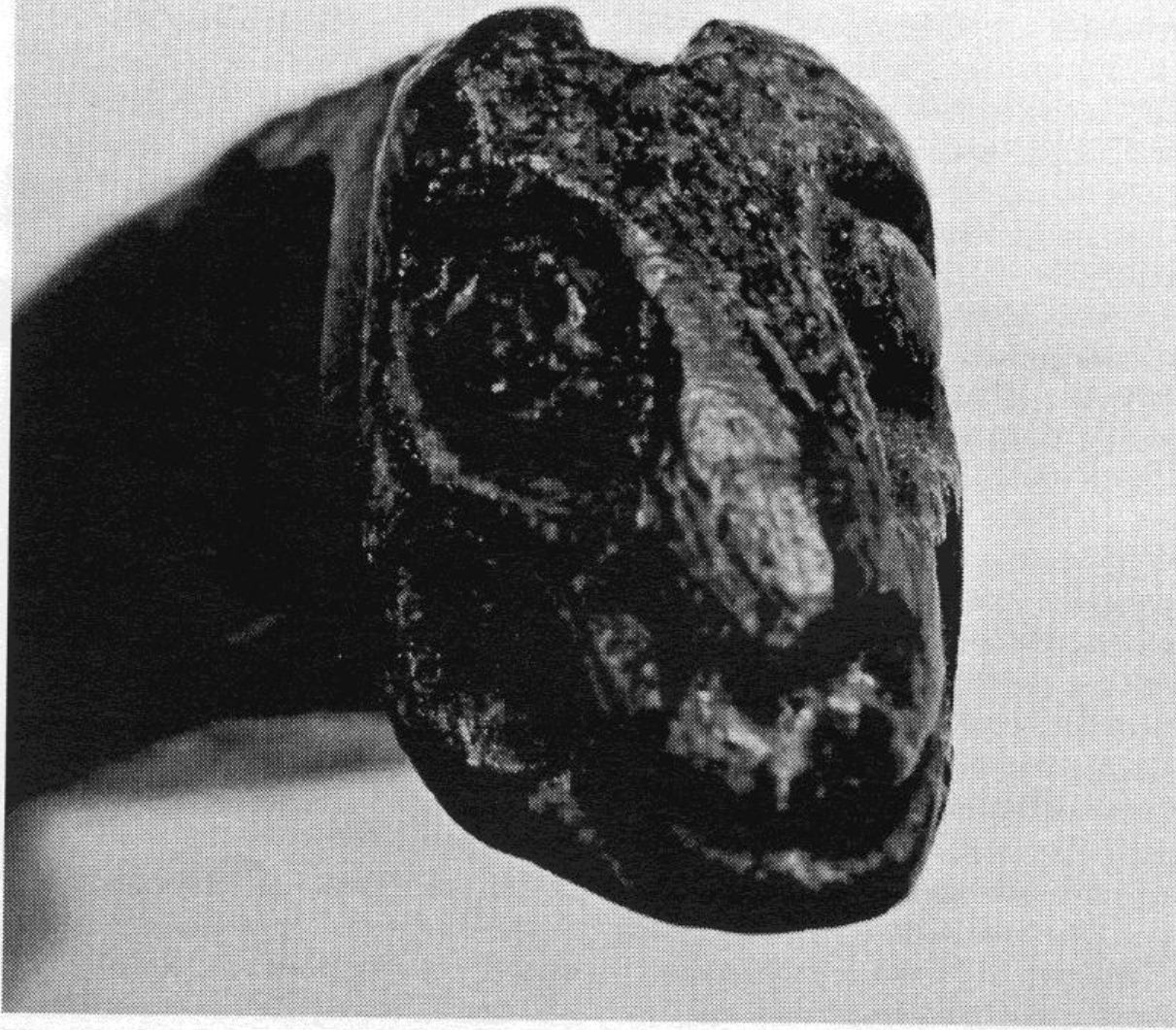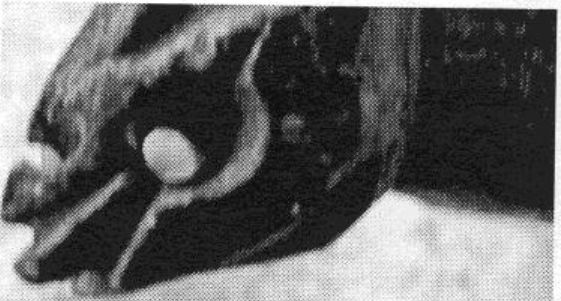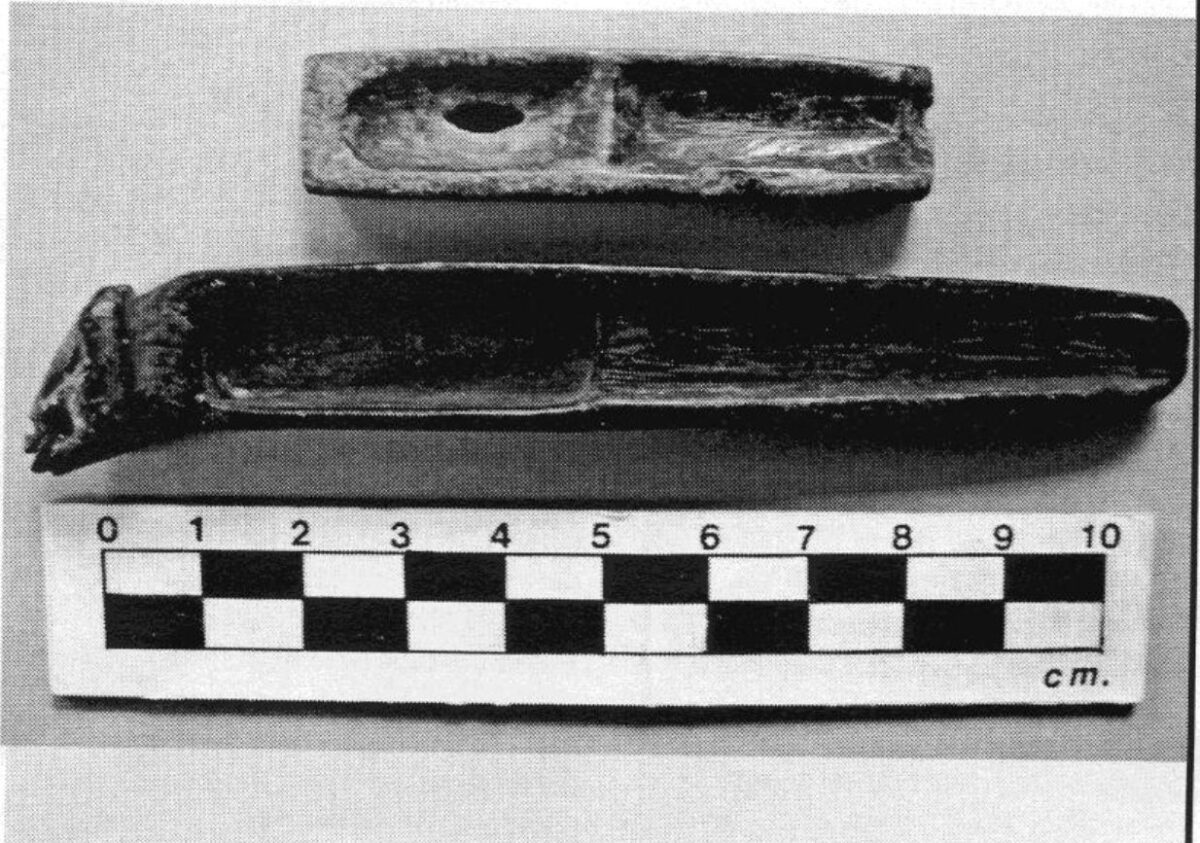Originally published in The Midden, 42(4), 6.
2010.
By Grant Keddie
These two unidentified stone objects, in the collection of the Royal B.C. Museum, are similar in quality of design to the scribe’s pallets that one finds in Egypt. I would suggest that these are fine paint pallets, possibly used in the process of body painting.

One upper pallet has two separate carved-out compartments. One compartment shows wear patterns on both sides typical of what we can observe on modern paint pallets where excessive rubbing at the centre wears into the hard surface under the paint.
The upper example (DjRi-Y:156) was collected by Charles Newcombe from the “Lower Fraser” in 1913 (old catalogue # 2518). It is only 60mm long by 14.5mm wide and weighs 9.75 grams. Thickness varies from 6-8mm. It is made of a clorite-like material.


The lower artifact (EbRj-Y:483) was originally in a large private collection, donated in 1944, that came from the general area of Lytton. It is 113mm long with the main body being 16mm high by 10mm wide. It weighs 25.8 grams and is made of a slate-like material. The carved head (18mm by 11.5mm) is an unidentified mammal.
A hole through the head, back of the mouth, is likely for tying a cord— possibly to pull the object out of a specially made container? A smaller hole was originally made through the nose, but wore through—requiring the drilling of a second hole.
